The Rover 200 Coupé was unveiled 30 years ago this week at the 1992 Paris Salon. By then, the car had claimed 37 UK land speed records, 36 of which still stand today. ‘One of the most beautiful cars Rover have ever put into production also turns out to be the fastest,’ said the advert, about a coupé that would develop cult status in the UK.
Nobody could accuse Rover of failing to squeeze the most out of its R8 platform; three and five-door hatchbacks, five-door estate, cabriolet and coupé bodies ensured that there was a Rover 200-series for everyone. Work on Project Tomcat began in 1988, with the production version boasting a sunroof with two lift-out glass panels, a suggestive bonnet bulge and styling that could rival any curvaceous coupé of the 1990s.

There were four models: 216, 216 automatic, 220 and 220 Turbo, with Honda initially providing the 1.6-litre engine and gearbox for the 216 and Rover the 2.0-litre 16-valve unit for the 220. A Rover 1.8-litre K-series engine replaced the 2.0-litre engine in 1996.
Rover never expected the 220 Turbo to be a big seller. At launch, it predicted that the flagship would account for just 10 per cent of 200 Coupé sales, with the more affordable 216 grabbing the majority share. That’s the thing with coupés: many punters want the style, but not necessarily the performance. Looking good is more important than going fast.
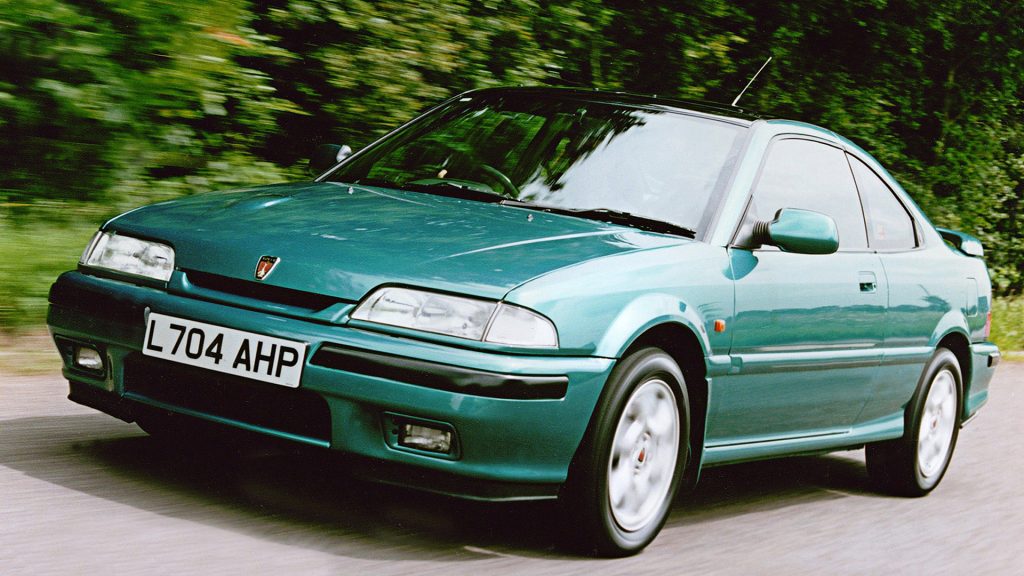
Billed as the fastest road-Rover ever built, CAR claimed the 197bhp 220 Coupé Turbo had “the on-paper potential for a head-to-head ruck with the super-coops from Stuttgart and Maranello. Zero to sixty in 6.5 seconds and a top speed of 147.6mph meant that the Rover ran riot in a group test against the BMW 325i Coupé, Honda Prelude VTEC and Volkswagen Corrado VR6 – on paper.
Unfortunately, the 220 Turbo failed to shine against its rivals on the road, although CAR did concede that the Rover had “Herculean strength” and “looked the part”. It finished fourth, with the BMW, Volkswagen and Honda taking podium places, in that order. In an Autocar & Motor twin test, the entry-level 216 Coupé was beaten by the Vauxhall Calibra.
None of this stopped the 200 Coupé from gathering a strong following, especially in the UK. Gorgeous styling, generous levels of equipment and low prices made it a mainstay of the coupé market throughout the 1990s. Unlike its rivals, it also had a few records to its name.
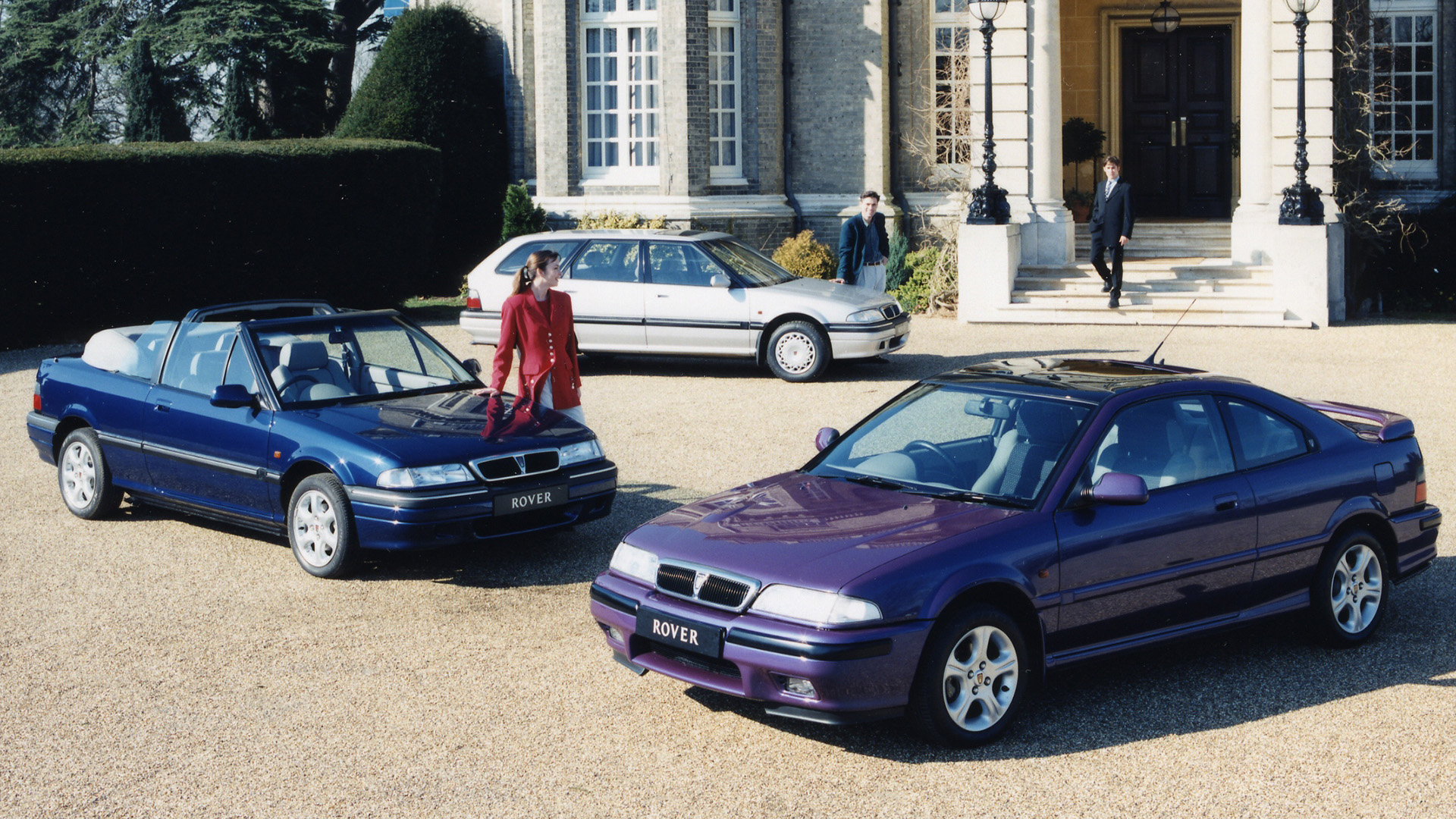
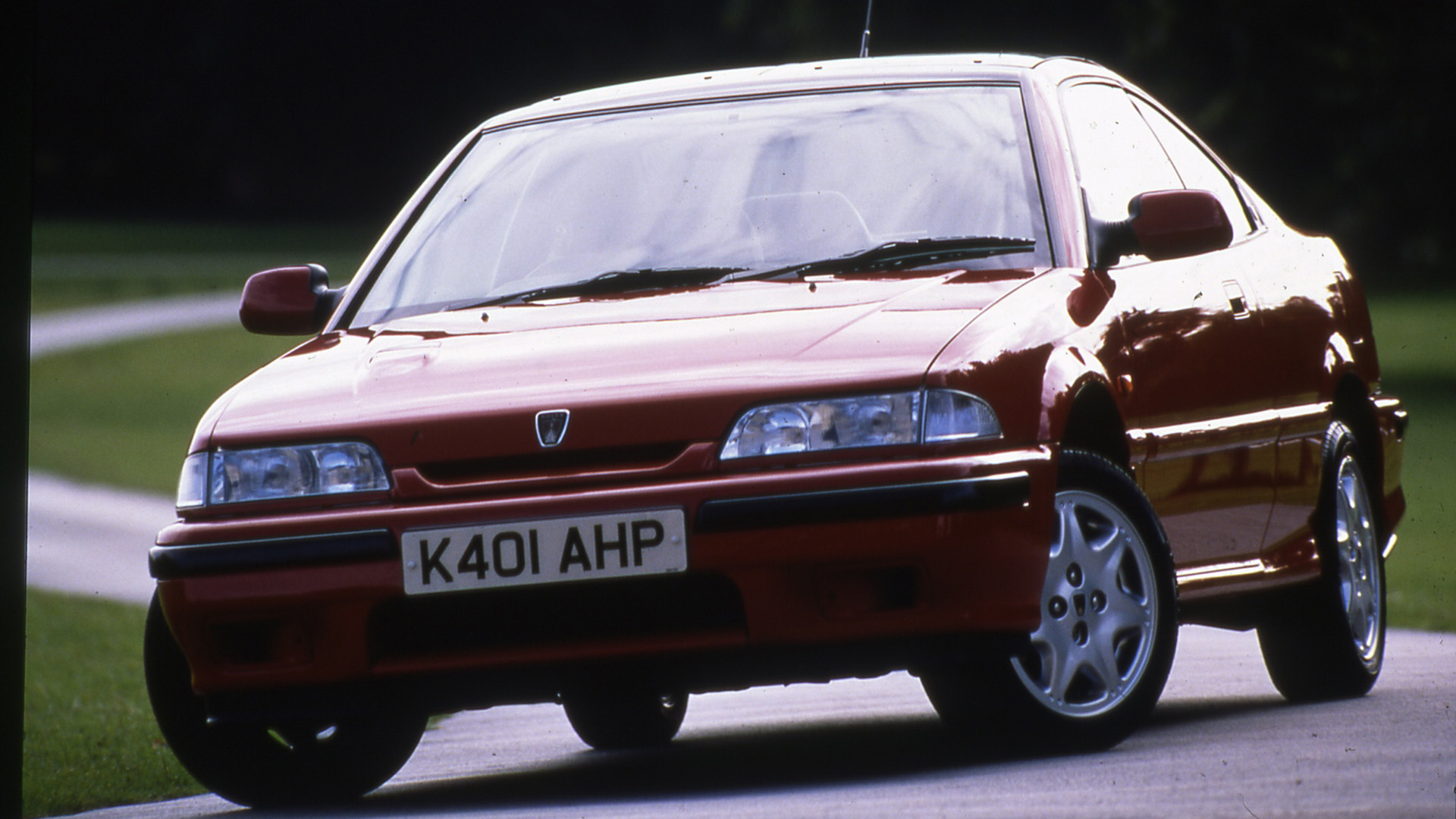
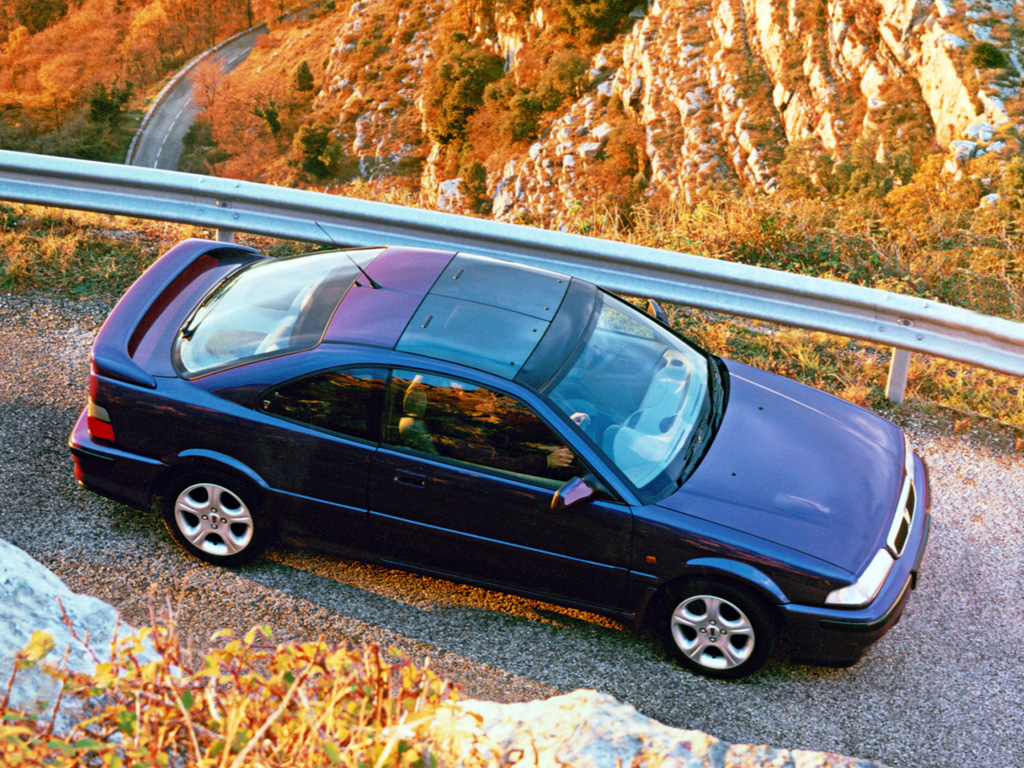
The record-breaking attempt was the brainchild of Project Tomcat chief engineer Nick Fell, who wanted to create some extra buzz around the launch of the Coupé. Called ‘Tomcat Affair’, it stemmed from an article in CAR, in which Phil Llewellin toured UK speed record sites in a Vauxhall Lotus Carlton. Could the production Tomcat be a record breaker?
Project engineer Steve Carter recalls how the team decided to investigate which speed records were within reach of the 150mph 220 Turbo. Numerous class records for 2-litre wheel-driven cars (speed and distance over a 24-hour period) were up for grabs and held by a Vauxhall Astra GTE set at the Millbrook proving ground, near Bedford.
Speaking with Classic.Retro.Modern. magazine, Carter said: “The intention was to build two vehicles as close as standard as possible except for safety requirements, using know-how from the Tomcat Turbo race car that was being developed concurrently.
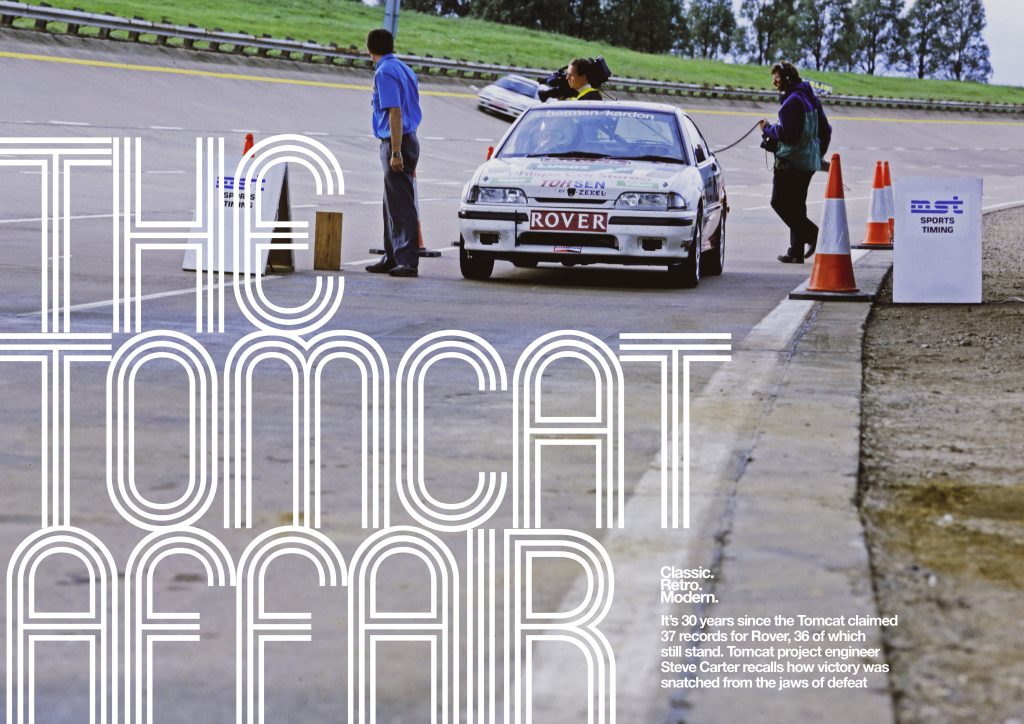
Two cars were built at workshops in Gaydon using former test vehicles, with long-range fuel tanks installed to avoid losing too much time refuelling, along with a strengthened powertrain to reduce stress. The engines would continue running during driver changes, pit stops and refuelling.
The first record attempt didn’t go according to plan. “A noisy driveshaft joint reared its ugly head,” recalls Carter. “We changed the driveshaft and reduced the lap speeds, but the problem continued; it became a recurring problem on both vehicles. By 3am it was clear that the time lost and a lack of driveshaft spares meant we couldn’t continue, so the weekend was aborted.”
The extreme angles of the banked circuit had overheated and worn the joints, so GKN came up with a solution. Come the end of September 1992 – perilously close to the Paris Salon – it was time for the second attempt. There were two Rovers, one of which would concentrate on long-distance records.
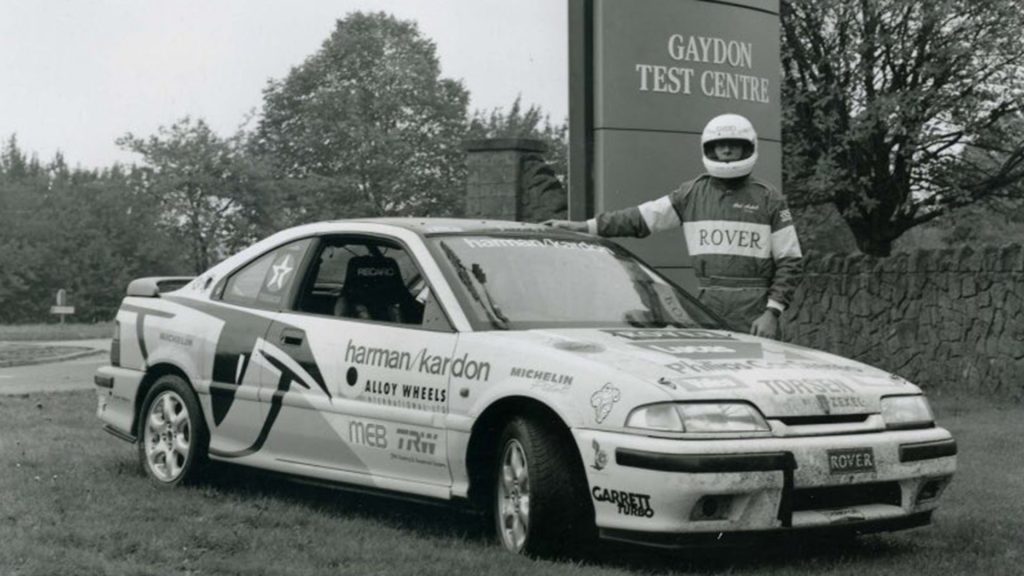
As the, er, records show, the Tomcat Affair was successful in securing many titles, including 3332 miles and 613 yards at 136.43mph over 24 hours. “The atmosphere was brilliant, and although everyone was tired, we all appreciated what had been achieved: 37 records, and we had driven further in our 24 hours than the winning Peugeot had at Le Mans a few weeks earlier,” recalls a jubilant Carter.
Though understandably proud of the what the small team achieved on a limited budget, Nick Fell admitted the Tomcat Affair was a big distraction. “The preparations for the weekend were running in parallel with getting the Tomcat into production, but it was much more exciting working on record cars than being shouted at by production managers on the Longbridge night shift.
“The Tomcat Affair was a big distraction for the team, and we should have put more attention into boring issues such as sunroof rattle, door glass setting and turbo hose blow-off. Nonetheless, the Tomcat Affair would most definitely have been worth the compromises had we fully capitalised on it.”
Editor, James Mills, was one of the road testers who encountered the 220 Turbo back in the day. “It had so much potential, especially given the firepower and the handsome styling, but there was a feeling that it lacked finesse throughout, and struggled to contain all that firepower. The unsettled ride and equally unsettling torque-steer made it hard work on a good bit of road. And when you’re facing the 325i and Corrado VR6 – even the Prelude, which handled surprisingly sweetly – you needed to bring your A-game. The later 620ti was a better-sorted car, in that respect.”
Mills reports that the 220 Turbo was a regular site at Millbrook, during its development. “We’d see them pounding round the outer lane of the high-speed bowl, at top speed, doing durability heat-soak runs where they’d thrash it senseless then park it against a wall and switch it off to check it kept its cool. One poor chap was running half a lap ahead of us, one day, and we came around the bowl to find a thick wall of smoke. The Tomcat’s driver’s side rear tyre had burst, and somehow the driver had drifted from nearly 150mph all the way down the slope of the bowl before gathering it all up and awaiting help. I next saw him hand back his radio to the track controller, buy a pack of Marlboro reds from a vending machine then disappear into the Gents for a much-needed, ahem, sit-down and smoke.”
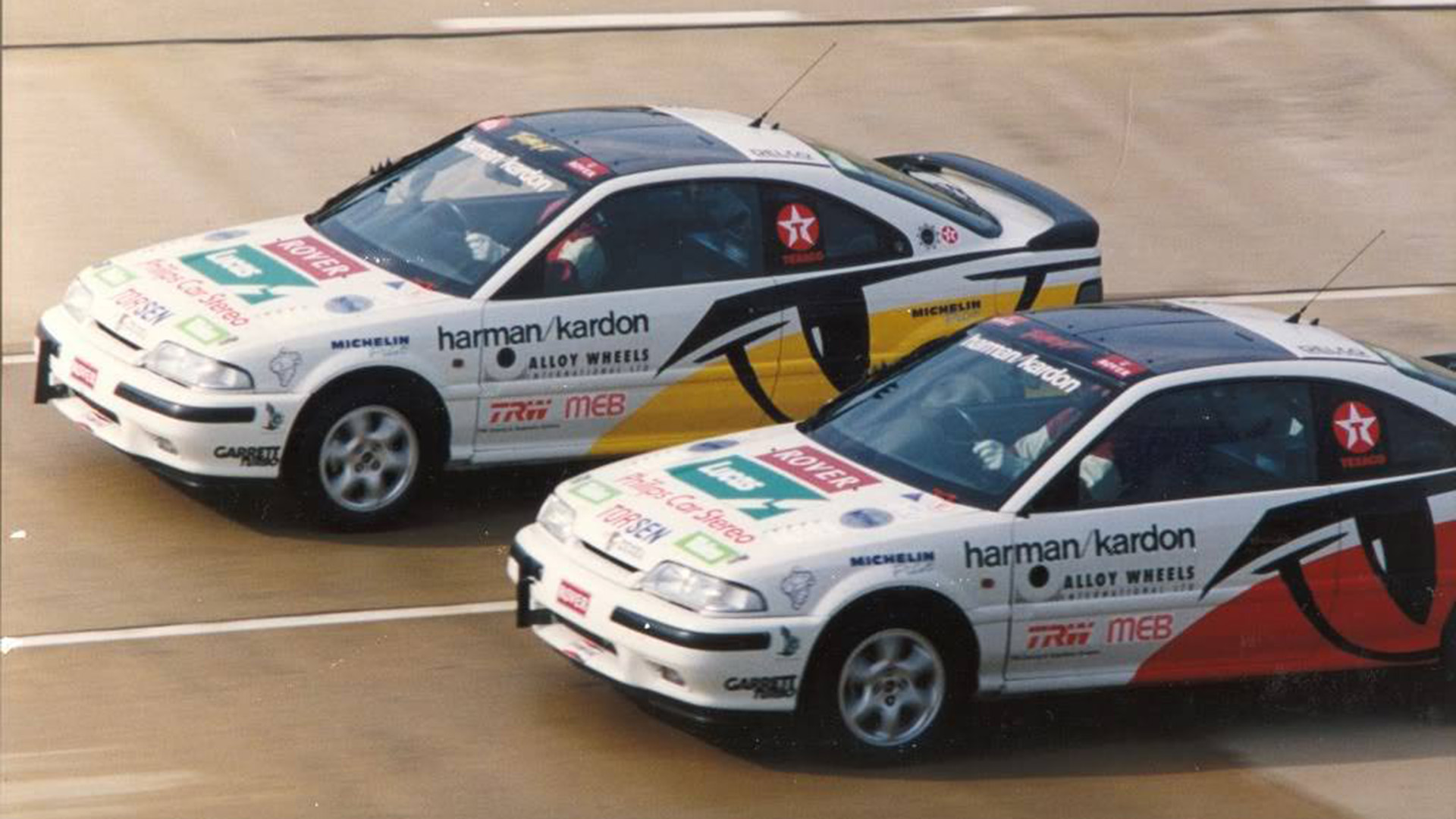
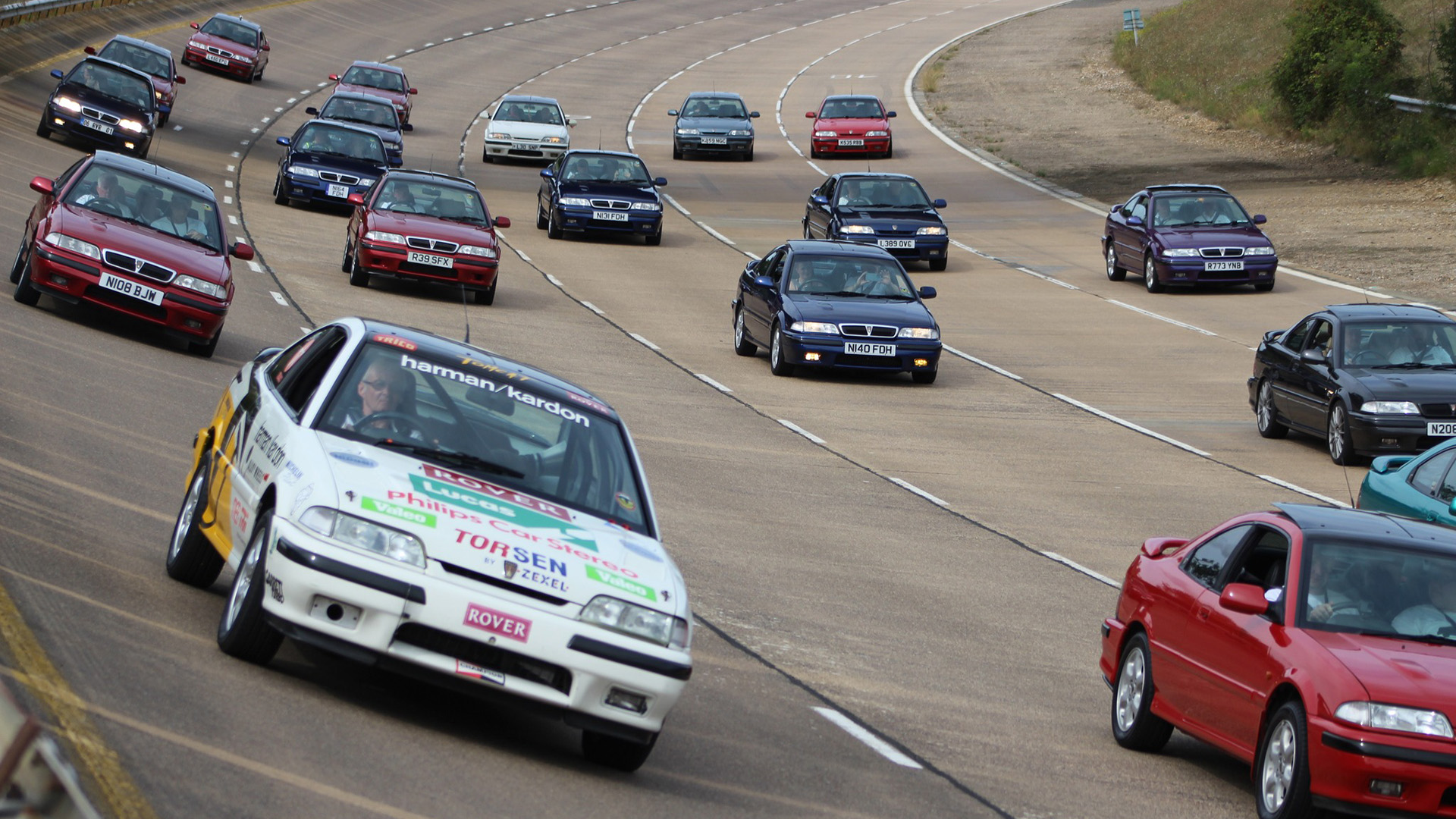
In August 2022, nearly 30 Rover 200 Coupés converged on Millbrook for a celebration of the car’s record-breaking run. The event was attended by one of the original cars, recommissioned for the gathering.
As for the road cars, after years in the doldrums, prices have been gathering pace for a while. The 220 Coupé Turbo remains the most coveted of the range, but buyers have woken up to the charms of the cooking models. You’re advised to study this buying guide before taking the plunge. Also, be sure to check out the Rover Coupe Owners Club.
The 200 Coupé doesn’t appear on the Hagerty Valuation Tool, but a quick look at Car & Classic reveals prices ranging from £2000 for a 1993 216 to £19,995 for “what is probably the best remaining Rover 220 Coupé Turbo“. Blimey.
Read more
Filled your car with the wrong fuel? Here’s what to do
Buying Guide: Rover SD1 (1976–1986)
9 stunning coupés we were cruelly denied



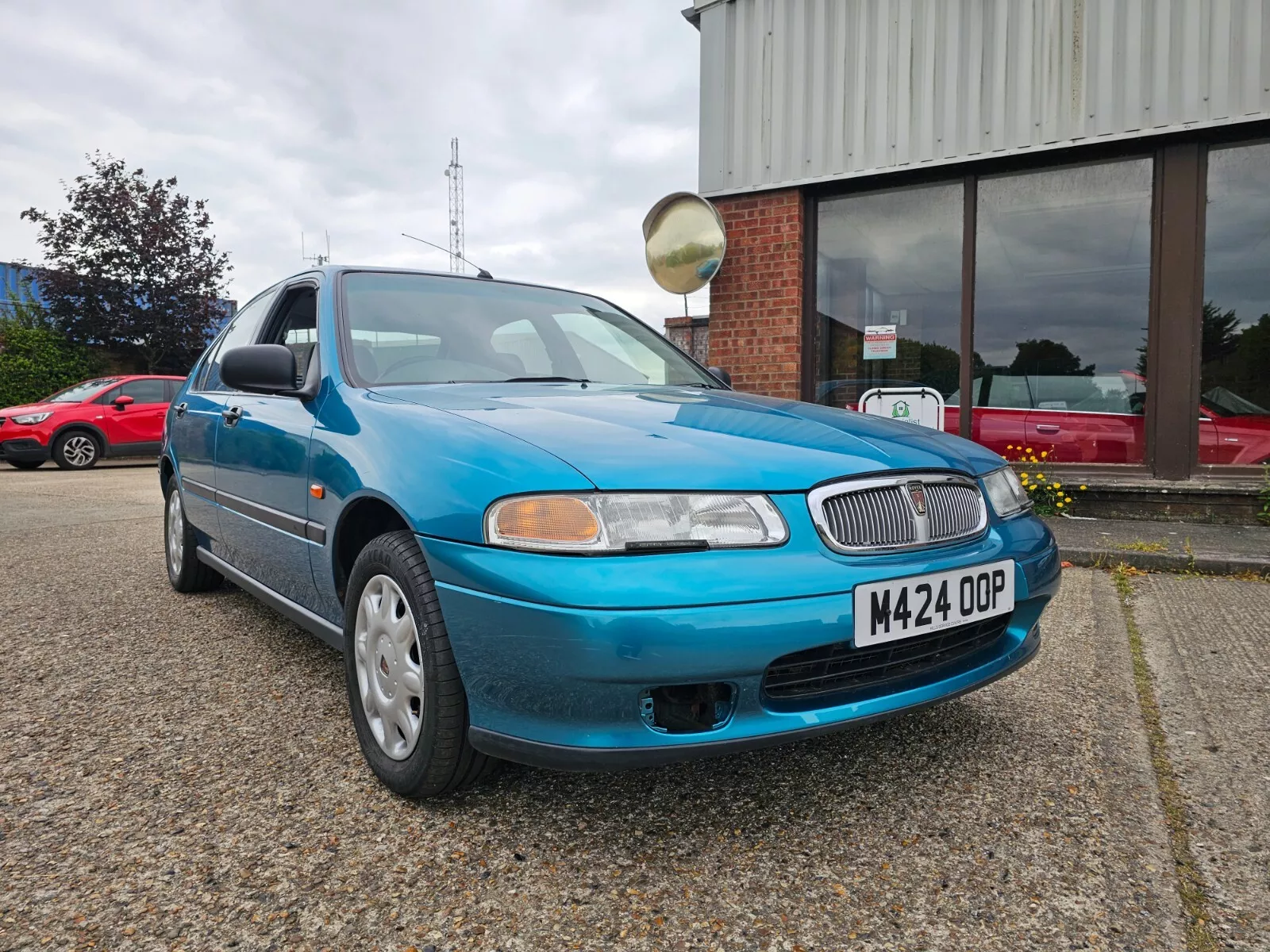






Had a 220 turbo coupe, fastest car I’ve owned and had brilliant acceleration. Unfortunately I fell out of love with it suddenly after it went into a Rover dealers for a service and came back with a failed head gasket, said dealers saying they knew nothing about it. Could never prove anything but certainly looked like some workshop joker had taken it out on a test drive and caused the damage. It had to go!
What a dreary looking, perfunctory “coupe” variant of an existing range. It hardly made a ripple at birth against better looking competitors and is still barely worth a glance except for historical interest. I actually thought the saloon looked better at the time, and it has aged even better IMHO.
I had a 620ti for a couple of years. Loved it. Loved its style, loved its power, loved the look on the faces of those in “superior” cars well beaten by it at the traffic light Grand Prix. I heard that owners BMW canned it because it whooped their own 3 series – probably true. Rover group history is full of “what might have been”. The 600 and Tomcat being just 2.
I had a 220 thought it was a great car 😃 , the t-top was fun and made it feel light inside, was lovely to drive much better than the V6 probe I replaced it with
My late nephew Owen Davies was involved in the development of the Tom Cat, working on the electronics, he had two patents to his name for his research at Rover.
Owen said the brief was to build a Sierra Cosworth beater and the development prototype potentially did just that with an output of around 250bhp. However management decided this was too powerful and likely to lead to serious accidents in the hands of inexperienced owners so power was toned down to avoid bad publicity.
Some weekends Owen got to drive the prototype to put miles on it and lifting the bonnet showed numerous components held on with self tappers to allow a quick change if needed. We drove to North Wales on one occasion and when the coast was clear he put his foot down – the acceleration was astonishing more like a big motorbike than a car! Sadly when no longer of use it went to the crusher.
Another project Owen was involved in was a very hot version of the Metro with a K Series engine. It was badged as a 1.1 and the only way to tell it visually from a standard model was by the wider wheels and the large tail pipe. He certainly surprised a few larger performance cars with this Q ship.
I wonder if any readers remember Owen? After Rover collapsed he worked at Land Rover for a while then moved to Belgium and France where he became Renault’s Patent Attorney and litigator. Tragically he was to die of a heart attack in 2008 at the age of only 45.
When our choice of company cars was expanded beyond the usual Vauxhall Omega and Ford Granada one of my colleagues, with no children, went for one of these. Certainly was quick but for a family it would have been cramped.
I worked for a Rover dealer when these cars were current. Only the 216 automatic had the Honda engine. The manual was a Rover unit. Head gasket failure on the Rover 2 litre engine was a common problem.
I have owned a few of these over the years and loved them. I have a white 216 coupe which is in imaculate condition. Great car with no issues at all.
From launch in ’92 to the introduction of 96MY in late ’95, the 216 had a Honda D-series engine combined with either a 5-speed manual- or a 4-speed automatic- gearbox. At 96MY (identified by the new curvy dashboard) the engine line-up changed to be all 1.8 K-series with either a 5-speed manual- or a CVT automatic- gearbox.
For the UK the 1.6 D-series engine was a SOHC and the line-up included a 2.0 naturally aspirated T-series 220 but for many export markets there was no 220 n/a and the 1.6 D-series was a DOHC. This was largely due to tax rules restricting sales of engines over 2.0 unless they were worth the extra cost, like having a Turbo 🙂
My employer was involved in the manufacture and supply of the Low Pressure die cast LM25 Aluminium alloy wheels used for the Tomcat project. Rover supplied us with the front face styling, hub and calliper details along with rim requirement and offset. This left us to produce an interior which would avoid all these parts, and then be bolted to the hub so that all came together in the correct locations. Further, there was a ridiculously low max weight limit which prohibited adding a bit of strength ‘just in case’. It also upset our Financial Director because part of the selling price was tied to the weight of the alloy involved. To make matters worse, the wheels weren’t only for the project but must additionally satisfy all the US, UK, German, Japanese etc test requirements. Even paint spec and colour match. To reach the weight limit the dies were manufactured to produce a wheel with thinner than would be normally used in the various sections, castings made, heat treated etc. etc, the finished product then tested to destruction. Die back to the tool maker, a bit off metal off the die (thickens section), cast again, test again, weighing all the time until the manufactured product was down to spec. At the plant, once we’d been fully informed what Rover were going to do with them anxious moments were spent by me and my colleagues, peering into the back end of a wheel, calculating local strength loss, making a decision and then watching the result of our labours be squashed into oblivion, all watched by a grinning technician. “Sorry guys, back to the drawing board, eh?” Finally finished batches were produced and despatched to Longbridge and we sat with bated breath awaiting the news. We all heaved a huge sigh of relief mixed with some delight when our Rover Liaison Sales Manager returned from Millbrook? I recall telling us it had been huge success; nothing had fallen off, no tyres had deflated (porosity!), in all, drinks all round! Except the overall sales figures and the ‘puny’ castings rather took the shine off it all. It was never a loss leader; our Financial MD would never have allowed that. It was just something to pin on the wall in reception to impress the visitors. While on the subject a space saver was fitted and thrashed around the track to test its suitability, at what speeds I can’t remember but they all survived.
If it’s of any interest, I’ve got pics of wheels tucked away at the back of my desktop, tested, under test and also the machines designed to simulate various types of real time accidents. You may guess I’ve got lots of spare time on my hands nowadays. Just a reminder that only sweat and little of the glory reflects on us at the front end, we were just the P. B. Infantry!
I was introduced to one by a friend of my dad, I was only young, probably 14-16yrs, but that planted the seed in a sense for me. I was absolutely fixated on the Tomcat’s.
Still my opinion but I cannot name a body shape I fell in love with quicker than the coupe’s. Since then I always had an eye out for a Tomcat, more of a dream than something I could actually own, but a few years later at 18, with a lot of luck and fortunate timing one came up for sale, a turbo model of all things, and I managed to get it.
My first car ever is a Rover 220 coupe turbo!
It’s a rough one, I mean really rough. I would bet if it didn’t come to me it would’ve been scrapped or broken for parts it was that bad.
I wanted one bad enough, well aware of how much love and effort it will take to get the thing back to a condition it’s worthy of being in I dove headfirst into this project.
It’s still being worked on, with a lot of help and support from my parents. At this point I’m too far in to pull the plug, but I wouldn’t have it any other way.
I can’t imagine having anything else as my first car… I was always set to own a Rover!
Sounds like a terrific project, Thomas, and a cool first car. We’ll be in touch…
iv had my turbo coupe since it were 4 year old bought it in 98, still have it and it’s been driven hard most of that time, the poster “edd” has not got a clue, they are well put together has great interior and fast esp for 1992! i will admit tho the sunroof is noisy, brakes too small
I had a 216 Coupe (N269 TOJ) Knight Fire Red, back in the day, no Rattly/noisy roof (not sure why others suffered, there were rubber seals, which held the glass panels nice and snug), no break issues or Head Gasket. Handled like a go kart…. It sounds like the wiggle who wrote this article, never owned, or even driven one, lets hope they are not the cream of the Motoring Journalism, or we are are all in trouble, what a moron.
Brake*